A comprehensive understanding of flexible printed circuit board
Flexible Printed Circuit Board (FPC)
A Flexible Printed Circuit Board (FPC) is a type of printed circuit board that is made using a base material of polyimide or polyester film, which gives it high reliability and excellent flexibility.
FPCs are characterized by high wiring density, lightweight, and thin thickness. They can be freely bent, twisted, and folded, allowing for movement and extension in three-dimensional space, which integrates component assembly and wire connections. In electronic products, FPCs are widely used in fields such as mobile phones, laptops, digital cameras, and automotive electronics. For example, in mobile phones, FPCs connect components like displays, buttons, and cameras; in automotive electronics, they connect various sensors and control units.
As electronic products continue to develop towards miniaturization, lightweight, and thinness, the market demand for FPCs is constantly increasing, and technology is continuously innovating and upgrading to meet the requirements for higher performance and reliability.

What is the function of flexible printed circuits?
Flexible printed circuits (FPCs) have the following main functions:
1. Connection Function
Component Connection: FPCs can connect electronic components such as chips, resistors, capacitors, and inductors to form a complete circuit, enabling the transmission and processing of electronic signals. For instance, in smartphones, FPCs connect the motherboard with components like cameras, displays, and fingerprint sensors, ensuring their proper operation and communication.
Inter-board Connection: Used to connect different circuit boards, enabling them to work together. For example, in laptops, FPCs often connect the motherboard with input devices like keyboards and touchpads.
2. Signal Transmission Function
High-Speed Signal Transmission: Capable of supporting the transmission of high-speed digital signals, meeting the data transmission speed and quality requirements of modern electronic products. For instance, high-speed data buses in computers and high-definition video signal transmission lines may use FPCs to ensure signal integrity and stability.
Analog Signal Transmission: Suitable for transmitting audio, video, and other analog signals, playing an important role in audio equipment, video playback devices, etc. For example, in headphones, FPCs serve as connecting wires; in audio equipment, they connect internal signal lines.
3. Space Saving and Flexible Layout Function
Three-Dimensional Wiring: Due to their flexible and bendable nature, FPCs can be used for three-dimensional wiring in tight spaces, making the internal structure of electronic products more compact and achieving miniaturization and lightweight designs. For example, in wearable devices like smartwatches, FPCs can be flexibly bent and folded to achieve complex circuit layouts in limited space.
Adaptation to Complex Shapes: Can conform to irregular surfaces and shapes for wiring, better meeting product design needs. For example, automotive interior components with curved shapes and special structures in medical devices can use FPCs for circuit connections and layouts.
4. Enhanced Reliability Function
Reduced Solder Points: Compared to traditional rigid circuit boards that connect components with numerous solder points, FPCs can use plug-in, compression, and other methods to connect components and circuits, reducing the number of solder points and the risk of circuit failure due to solder point issues.
Resistance to Vibration and Shock: In electronic products operating in harsh environments with vibration and shock, such as industrial control equipment and automotive electronics, FPCs’ flexibility allows them to better withstand vibration and shock, reducing the likelihood of circuit breakage and improving reliability and stability.
How do Flex PCBs Work?
The working principle of flexible printed circuit boards (FPCBs) is similar to that of traditional printed circuit boards (PCBs). Both utilize an insulating substrate material to isolate the conductive copper foil layers on the surface, allowing current to flow along pre-designed routes among various components. This enables the completion of functions such as performing work, amplification, attenuation, modulation, demodulation, and encoding.
In practical applications, FPCBs can be folded, bent, and twisted to fit different installation spaces and usage environments, offering high flexibility and reliability. Additionally, FPCBs can achieve multi-layer stacking, enhancing the integration and performance of the circuit board.
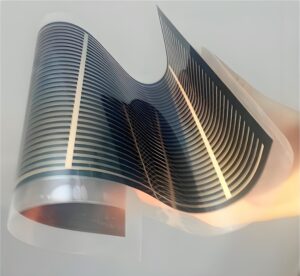
What is a flexible film circuit?
A Flexible Film Circuit is an electronic circuit made using flexible film substrate materials through processes like photolithography, etching, and deposition.
Flexible film circuits typically use high polymer materials like polyimide (PI) or polyester (PET) as the substrate. These films have excellent flexibility, bendability, and temperature resistance. On the film surface, metal layers (such as copper) are deposited and processed into specific circuit patterns using photolithography and etching techniques.
Flexible film circuits are lightweight, thin, bendable, foldable, and adaptable to various complex shapes and space requirements. They are widely used in electronic products such as:
Consumer Electronics: Used in connection lines, antennas, and other parts of devices like mobile phones, tablets, and laptops. For example, foldable screen connection lines in mobile phones use flexible film circuits to achieve screen folding functionality while ensuring stable signal transmission.
Automotive Electronics: Used for connections in instrument panels, sensors, and in-car entertainment systems. For example, seat heating control circuits in cars can be installed to fit the seat shape using flexible film circuits.
Medical Devices: Found in devices like pacemakers, glucose meters, and blood pressure monitors. In wearable medical devices, flexible film circuits can conform to the skin for comfortable wear and accurate monitoring.
Aerospace: Used in satellites and spacecraft, where space is limited and weight is critical. Flexible film circuits play an important role in connecting various sensors and control systems.
Why is flexible film important?
Flexible film is important for several reasons:
1. Miniaturization and Lightweight of Electronic Products
Optimized Space Utilization: As electronic products continue to miniaturize and become portable, internal space is extremely limited. Flexible films are thin and can achieve circuit connections and function integration without adding much volume and weight. For example, flexible film circuits can be attached to device walls, curved surfaces, or tight spaces, making product designs more compact and saving space for other components.
Weight Reduction: In fields where weight is critical, such as aerospace, military, and mobile communications, reducing weight can improve performance or reduce costs. Flexible films, due to their material properties and ultra-thin structure, significantly reduce device weight compared to traditional rigid circuit boards.
2. Bendability and Foldability
Innovative Product Forms: Flexible films’ bendability and foldability allow for innovative product designs. For example, foldable phones rely on flexible film technology for screens and internal circuits, offering a large display when unfolded and portability when folded.
Dynamic Application Adaptation: In applications requiring dynamic bending or deformation, such as robotic joints or automotive seats, flexible films can bend and stretch with mechanical movement, maintaining stable circuit connections and signal transmission.
3. Impact and Vibration Resistance
Enhanced Device Reliability: In harsh environments with strong vibrations and impacts, traditional rigid circuit boards may suffer from solder point failure and circuit breakage. Flexible films’ softness can absorb and buffer vibration and impact energy, reducing circuit damage and increasing reliability.
Extended Product Lifespan: Flexible film circuits maintain good electrical and mechanical properties after repeated bending and twisting, extending electronic product lifespan.
4. Mass Production and Cost Reduction
Roll-to-Roll Manufacturing: Flexible films can be produced using roll-to-roll processes, achieving continuous, large-scale production, improving efficiency, and reducing costs. In roll-to-roll production, film materials feed continuously, undergo printing, etching, and coating steps, and output in roll form, minimizing manual intervention and production cycles.
Material Cost Advantage: As production technology advances and volumes increase, the cost of flexible film materials decreases. Compared to traditional rigid circuit boards, flexible film materials offer cost advantages in large-scale production.
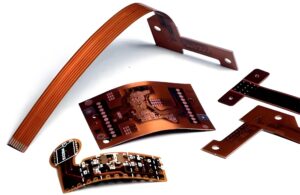
What are the advantages of using flexible PCB?
1. Flexibility and Bendability
Adaptation to Complex Shapes: Easily bent, folded, and twisted into various shapes to meet the compact and complex design requirements of modern electronics. For instance, in wearable devices like smartwatches, FPCs can be installed along the band or the curved contour of the device, making full use of limited space.
Three-Dimensional Wiring: Allows for three-dimensional wiring, making internal structures of electronic devices more flexible, reducing device size and weight. In foldable phones, FPCs connect the folding parts’ display and motherboard, enabling screen folding functionality.
2. Lightweight and Thin
Weight Reduction: FPCs use thin, flexible base materials and fine lines, making them lighter than traditional rigid PCBs. This weight reduction is crucial in applications where weight is critical, such as aerospace and portable electronics.
Thickness Reduction: Typically between 0.1 and 0.3mm, or even thinner, helping to reduce the thickness of electronic products and make them more portable. For example, FPCs can connect internal components in ultra-thin laptops, reducing overall thickness.
3. High-Density Wiring
Fine Lines: Capable of achieving finer line width and spacing, allowing for more lines and components in the same area, increasing circuit integration and wiring density. This enables electronic products to achieve more functions and higher performance.
Multi-Layer Structure: Can use multi-layer structures with through-holes or blind vias to further increase wiring space and density. In high-end smartphones, multi-layer FPCs connect components like camera modules, motherboards, and displays for dense signal transmission and power supply.
4. Good Reliability
Vibration and Shock Resistance:** Absorbs and disperses stress better when subjected to vibration and shock, reducing the risk of circuit breakage and component damage, enhancing reliability in harsh environments. In automotive electronic systems, FPCs can withstand vehicle vibrations and bumps during operation.
Fatigue Resistance: Maintains good electrical and mechanical properties after repeated bending and twisting, with a long service life. In devices that frequently fold and unfold, like foldable phones, FPCs’ fatigue resistance is fully utilized.
5. Easy Installation and Connection
Easy Plugging and Soldering:** FPC ends can be designed as plug-in connectors or soldered using surface mount technology (SMT), simplifying the installation process and improving production efficiency. In mass production lines
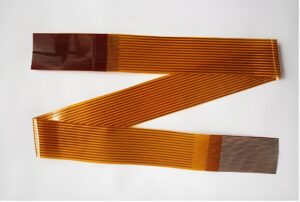
What are the Disadvantages of a Flexible PCB?
While flexible PCBs (FPCs) offer numerous advantages, they also come with certain disadvantages:
1. Higher Cost
Material Cost: The flexible substrates used in FPCs, such as polyimide, are more expensive compared to the glass fiber reinforced epoxy resin used in traditional rigid PCBs.
Manufacturing Cost: The fabrication process for FPCs is more complex and requires high-precision equipment and stringent production environment control. Processes such as etching, coverlay lamination, and multi-layer pressing necessitate specialized equipment and techniques, driving up production costs.
2. Poor Thermal Performance
Material Limitations: Flexible substrates typically have lower thermal conductivity than rigid PCB materials, making it harder for FPCs to dissipate heat efficiently during operation.
Structural Limitations: FPCs are usually thin and flexible, leading to shorter heat conduction paths between the circuit layers and the insulation layers. This limits heat transfer and dissipation. High-power electronic devices using FPCs might require additional thermal management solutions, such as heat sinks or thermal adhesives.
3. Lower Mechanical Strength
Limited Tensile and Tear Resistance: FPCs are more prone to breaking or damage when subjected to significant tensile or tearing forces due to their thin and soft substrate materials. Improper handling or external impacts during installation and use can lead to FPC failure.
Poor Puncture Resistance: FPCs are more susceptible to puncture by sharp objects compared to rigid PCBs, potentially compromising circuit integrity.
4. Repair Difficulty
High Circuit Density: The high density of circuits on FPCs, with smaller spacing between lines, makes it challenging to repair or replace individual faulty circuits.
Complex Flexible Structure: The ability of FPCs to bend and fold makes their structure more complex than rigid PCBs. Identifying fault locations and conducting repair operations requires higher technical skills and specialized equipment.
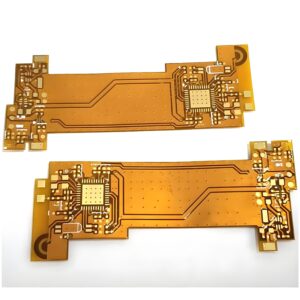
Differences between Flexible Circuits and PCBs?
1. Physical Characteristics
1.1. Flexibility
Flexible Circuits: Possess excellent flexibility, foldability, and rollability, allowing them to adapt to various complex three-dimensional shapes and dynamic application needs. For example, in the hinge part of foldable phones, flexible circuits are used to connect the screen and the mainboard, enabling the screen to fold.
PCBs: Are rigid circuit boards that do not have bending capability and can only maintain a flat form. A typical example is the motherboard of a desktop computer.
1.2. Thickness and Weight
Flexible Circuits: Thinner and lighter because they typically use thin flexible polymer films like polyimide (PI) or polyester (PET) as the substrate material.
PCBs: Thicker and heavier due to the use of substrate materials like glass fiber-reinforced epoxy resin.
2. Manufacturing Processes
2.1. Layer Processing
Flexible Circuits: The manufacturing process of multilayer structures is more complex, requiring special lamination and bonding techniques to ensure reliable connections and electrical performance between layers. For example, the manufacture of multilayer FPCs requires precise alignment and application of adhesive.
PCBs: The manufacturing process for multilayer PCBs is relatively mature, achieving electrical connections between layers through drilling and copper plating.
2.2. Etching and Imaging
Flexible Circuits: Due to the characteristics of the substrate material, the etching and imaging processes need to be specially optimized to avoid excessive damage and deformation of the flexible substrate.
PCBs: Etching and imaging on rigid substrates are relatively easier to control and achieve.
3. Application Scenarios
3.1. Space-Constrained and Dynamic Applications
Flexible Circuits: Suitable for electronic products with limited space that require frequent bending or folding and have dynamic motion needs, such as the internal connections of the retractable lens of digital cameras, and the cable connections between the screen and the main body of laptops.
PCBs: Commonly used in electronic devices where space is not a major concern and the structure is relatively fixed, such as the circuit boards inside desktop computer cases and server motherboards.
3.2. Reliability Requirements
Flexible Circuits: Have advantages in applications with high requirements for vibration and shock resistance, such as dashboard connection wires in automotive electronics and internal connection wires in aerospace equipment.
PCBs: Widely used in equipment with relatively stable working environments and minimal vibration and shock, such as control circuit boards in household appliances and power boards in office equipment.
4. Cost
4.1. Material Cost
Flexible Circuits: The flexible substrate materials and covering materials used are more expensive, and the adhesives and protective films used in the manufacturing process also increase the cost.
PCBs: The substrate materials and manufacturing processes are relatively mature, resulting in lower costs.
4.2. Manufacturing Cost
Flexible Circuits: The manufacturing process is complex, requiring high-precision equipment and strict production environment control, leading to higher processing costs.
PCBs: The production process is relatively simple, and the maturity of the equipment and processes makes the manufacturing cost relatively low.
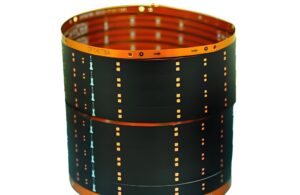
Are Flexible PCBs Reliable?
Flexible PCBs are reliable in many situations, but their reliability depends on various factors.
Positive Aspects
1. Bendability: Flexible PCBs are specifically designed for bending, folding, and twisting operations. Within a reasonable range of bend cycles and bending radii, their electrical performance remains stable. For example, in devices like foldable phones, rigorously tested and well-designed flexible PCBs can reliably function.
2. Miniaturization Advantage: Due to their thin, lightweight, and flexible nature, flexible PCBs can route and connect electronic components in confined spaces, reducing the likelihood of connection failures. Even in such compact designs, they can maintain stable performance.
Vibration Resistance: Compared to rigid PCBs, flexible PCBs can absorb and buffer vibrations to some extent, maintaining stable connections and signal transmission in vibrating environments, such as in automotive electronics.
Potential Factors Affecting Reliability
1. Material Fatigue: Although flexible PCBs can withstand a certain number of bends, excessive or prolonged repetitive bending may lead to fatigue damage in the circuits or substrate, affecting electrical performance and connection reliability.
2. Complex Manufacturing Process: During manufacturing, processes such as lamination, etching, and coverlay application, if not properly controlled, can introduce defects like short circuits, open circuits, and delamination, which decrease reliability.
3. Cost Factors: Achieving high reliability might require the use of high-quality materials and advanced manufacturing techniques, which increase costs. If production is constrained by cost limitations, it could impact reliability.
How to Make Flexible PCBs at Home?
Making flexible PCBs at home presents certain challenges and requires some specialized equipment and knowledge. Here are the general steps:
1. Design the Circuit Diagram: Use professional PCB design software to create the circuit diagram you want.
2. Prepare Materials: You will need to purchase flexible PCB substrates, etching chemicals, drilling tools, conductive inks, and other materials.
3. Print the Circuit Diagram: Print the designed circuit diagram onto the flexible PCB substrate.
4. Etch the PCB: Place the printed PCB substrate into the etching solution to etch out the circuit pattern.
5. Drill Holes: Use drilling tools to create holes in the PCB as needed for component installation.
6. Print Conductive Ink: If necessary, print conductive ink on the PCB to enhance the circuit’s conductivity.
7. Install Components: Install the components onto the PCB.
8. Connect the Circuit: Use soldering or other connection methods to attach the components to the PCB.
9. Test the PCB: Use testing equipment to check the PCB’s performance to ensure it operates correctly.
It’s important to note that making PCBs at home requires certain technical skills and experience. If you lack relevant background knowledge, you may encounter difficulties. Additionally, making PCBs involves the use of hazardous chemicals, such as etching solutions, so safety precautions should be observed during the process.
Gekun Flexible PCBs: 100% adhesive-free substrates, capable of withstanding temperatures up to 280°C. Utilizing advanced 10.8µm photolithography technology to eliminate misalignment. Specializing in the production of flexible printed circuit boards (FPC), soft boards, and flexible circuit boards. Custom designs based on provided drawings, with reliable service, quality assurance, and guaranteed delivery times!

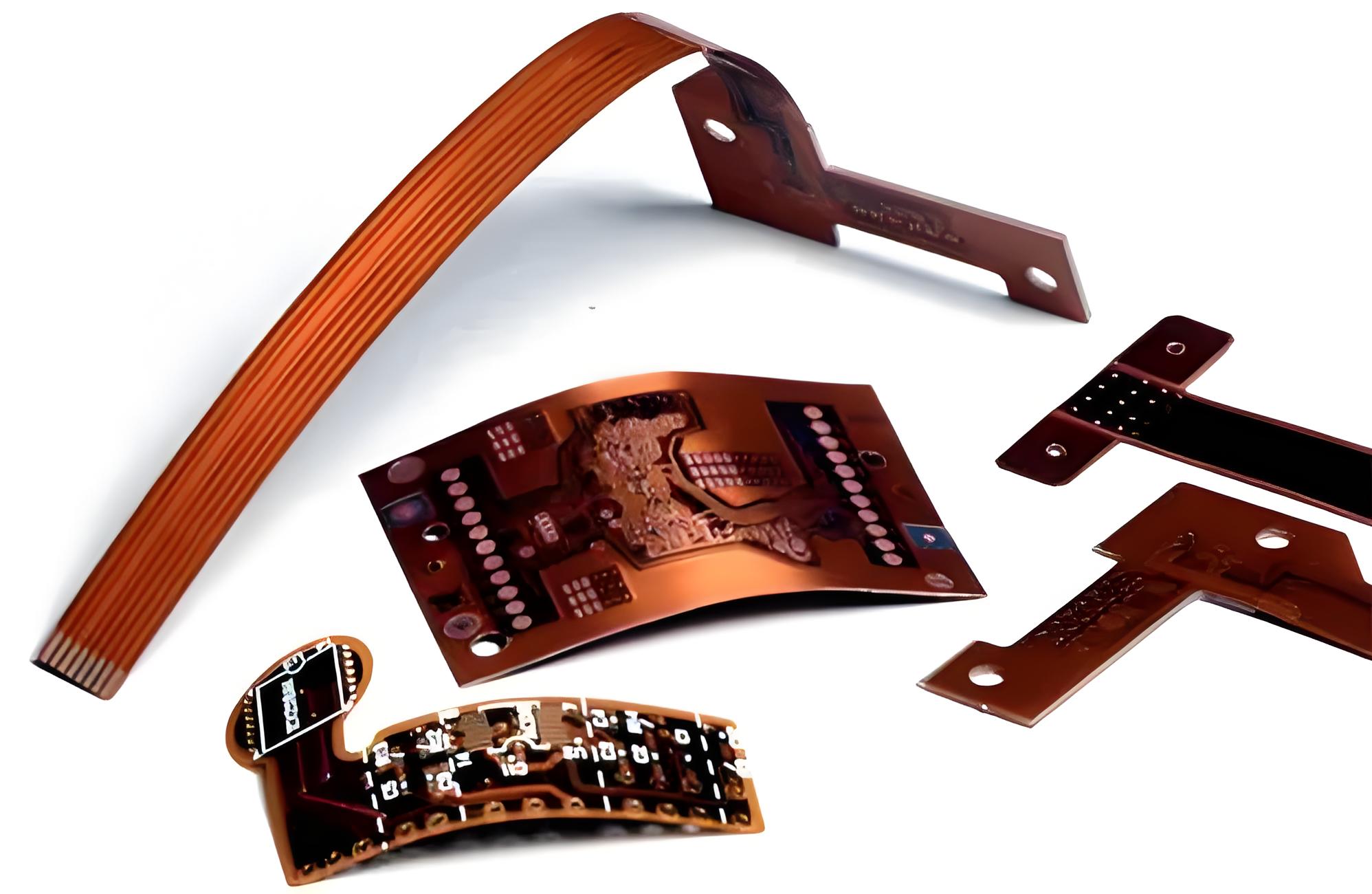

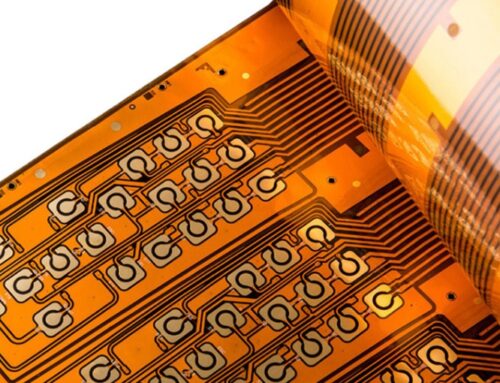
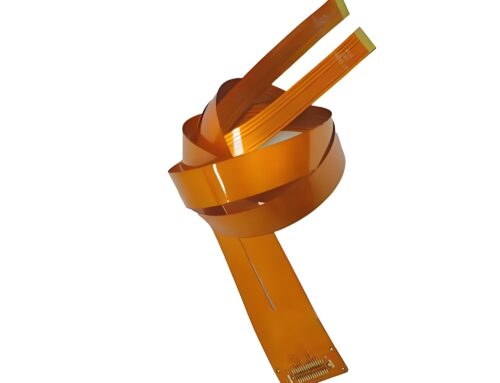



Leave A Comment